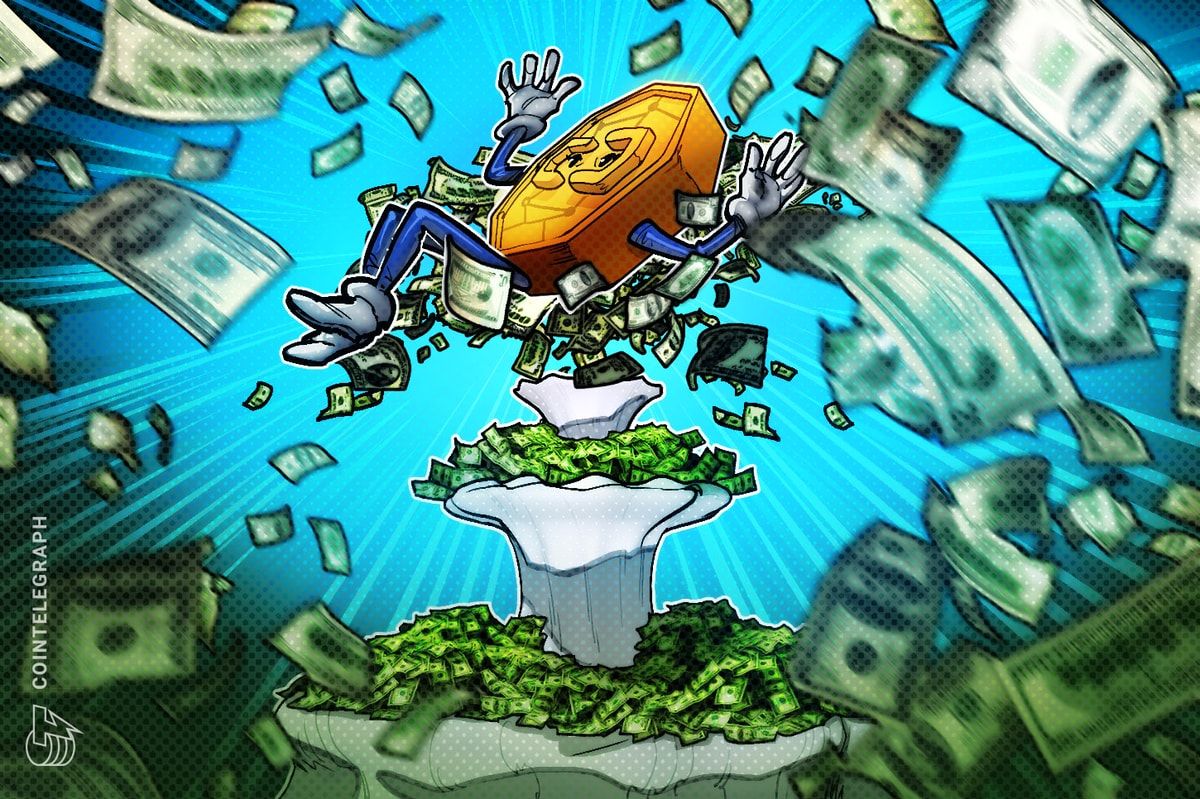Cryptocurrency 101
Cryptocurrency — also known as crypto — is a digital currency designed to work as a medium of exchange. It uses cryptography to secure and verify transactions, as well as to control the creation of new units of a particular digital currency.
Many cryptocurrencies are built on blockchain technology, which is a distributed ledger enforced by a distributed network of computers. Cryptocurrencies are distinguished from fiat currencies like the United States dollar or the British pound because any central authority does not issue them, making them potentially impervious to government intervention or manipulation.
This article will discuss various concepts of a cryptocurrency to help you understand the novel financial innovation.
How does cryptocurrency work?
The majority of cryptocurrencies function without the backing of a central bank or government. Instead of relying on government guarantees, decentralized technology called blockchain underpins the operation of cryptocurrencies.
Cryptocurrencies do not exist as a stack of notes or coins. Instead, they live only on the internet. Consider them virtual tokens, the value of which is decided by market forces created by those seeking to purchase or sell them.
Cryptocurrency is formed through a process known as mining, which entails employing computer processing power to solve complex mathematical problems to earn coins. Users can also purchase the currencies from brokers, which they can then store and spend using encrypted wallets.

Blockchains typically function via proof-of-work (PoW) or proof-of-stake (PoS) consensus algorithms. PoW operates based on miners who often designate specific computing machines for the process.
PoS, on the other hand, runs on staking. In the staking system, rewards are distributed to help run the network by holding assets in certain designated wallets. A number of PoS assets also allow for masternodes — a more complicated staking process that usually requires a certain minimum number of coins.
Who has historically impacted cryptocurrency?
A number of figures have significantly impacted the cryptocurrency industry throughout its time. Satoshi Nakamoto kickstarted the sector with the creation of Bitcoin (BTC). Known for building Ethereum (ETH), Vitalik Buterin has also notably impacted the cryptocurrency movement. With Ethereum came a whole world of extra tokens built on its network called ERC-20 tokens.
Jed McCaleb helped spread Bitcoin’s prominence in the industry’s early days as a result of starting Mt. Gox, a place that frequently hosted Bitcoin trading — despite its original function as a hub for fans of a game called Magic: The Gathering. However, it was rendered infamous when the platform fell apart in 2014.
Changpeng Zhao increased crypto-asset availability as one of the founders of Binance, which has grown into one of the largest crypto exchanges. Sam Bankman-Fried, co-creator of the FTX digital asset trading platform, serves as another important individual in the industry that impacts trading, decentralized finance (DeFi) and other aspects of the crypto space.
Numerous others have also made their mark on the industry, some of whom Cointelegraph lists in its top 100 people in crypto and blockchain for 2021.
Why are cryptocurrencies so volatile?
There is a lot of volatility in the cryptocurrency space due to the industry’s newness. Investors are seeking to experiment with their money to generate riches quickly and figure out how cryptocurrency prices vary and whether they can affect them.
The number of people who utilize crypto coins (i.e., utility) and for what purpose impacts their price. The price will rise if more people use them to buy goods and services rather than just holding them.
The value of cryptocurrency is also driven by scarcity. This alludes to the cryptocurrency’s finite mechanism. The Bitcoin protocol sets the maximum amount of BTC that can be mined at 21 million. Therefore, as more people enter the crypto space, Bitcoin’s scarcity will inevitably increase, causing its price to increase. Some coins also use the burning mechanism to increase their value by destroying a portion of the supply.
Accounts that hold vast amounts of a cryptocurrency may begin to sell, causing prices to plummet. These accounts are known as whales because they have a significant position and can influence the market if a group of people agrees to sell crypto assets.
Types of cryptocurrency
Different types of cryptocurrencies can be classified into the following two groups:

Coins are designed to be used as a kind of currency and are created on their own blockchain. For example, Ether is a cryptocurrency based on the Ethereum blockchain.
“Altcoin” refers to any blockchain-based cryptocurrency that isn’t Bitcoin. The term “altcoin” was coined as a shorthand for “alternative to Bitcoin,” and the vast majority of altcoins were created to improve Bitcoin somehow. Namecoin, Peercoin, Litecoin (LTC), Ethereum and USD Coin (USDC) are examples of altcoins.
Some cryptocurrencies, like Bitcoin, have a finite number of coins that help to generate demand and reinforce their perceived worth. For example, the maximum supply of Bitcoin is capped at 21 million, as determined by the Bitcoin's creator(s).
Tokens are built on an existing blockchain but are considered to be programmable assets that enable the formulation and execution of unique smart contracts. Outside of the blockchain network, these contracts can be used to establish ownership of assets. Tokens can be used to represent units of value such as money, coins, digital assets and electricity, and can also be sent and received.
Stablecoins peg their values to various fiat currencies or assets, such as gold. Most often pegged one-to-one with the U.S. dollar, stablecoins give users a way to sell into an asset carrying the same value as a national currency, but one that can still be transacted and stored in a crypto-esque fashion within the ecosystem.
Nonfungible tokens, or NFTs, are yet another type of cryptocurrency, denoting that it is a one-of-a-kind asset and cannot be replaced. A Bitcoin, for example, is fungible, meaning you can exchange one for another and get precisely the identical thing. However, a one-of-a-kind trade card, on the other hand, cannot be duplicated. You’d get something altogether different if you swapped it for a different card.
Before interacting with any given asset, it may be important to look up the asset’s type and function depending on your goals. Not all digital assets were created for investment purposes.
Are cryptocurrencies legal?
Regulation has come into play worldwide with the growth of the crypto industry. Over the years, the United States has increasingly stepped up its overwatch of the space. The Securities and Exchange Commission (SEC) cracked down on initial coin offerings, or ICOs, after the mania of 2017 and 2018. The Commodity Futures Trading Commission (CFTC) and other U.S. agencies have also engaged in various capacities.
Additionally, crypto regulation outside the U.S. has changed over time, based on evolving regulatory guidelines. The fifth Anti-Money Laundering Directive from the European Union, for example, entails that crypto buying, selling and other operations must comply with certain guidelines in certain regions.
Since crypto is a relatively new industry compared with others, legal clarity does not yet exist in terms of requirements for all areas of the space. Part of such clarity includes asset classification. Bitcoin and Ether are viewed as commodities, although categorization for numerous other assets remains unclear.
Advantages and disadvantages of cryptocurrency
A cryptocurrency transaction is usually a rapid and straightforward process. Bitcoin, for example, can be exchanged between digital wallets using only a smartphone or computer. Public and private keys and various incentive schemes such as proof-of-work and proof-of-stake are used to safeguard these transfers. Payments in cryptocurrencies are growing more popular among large corporations and in industries such as fashion and pharmaceuticals.
Every cryptocurrency transaction is recorded in a public ledger known as the blockchain, which is the technology that makes it possible for it to exist. This allows people to follow the history of cryptocurrencies like Bitcoin to prevent them from spending coins they don't own, copying transactions, or undoing them. Because blockchain intends to eliminate intermediaries such as banks and internet marketplaces, there are no transaction costs.
However, you’ll likely misplace your virtual wallet or lose your coins. There have also been thefts from the websites that exist to store cryptocurrency on the internet. Because the value of cryptocurrencies like Bitcoin can fluctuate dramatically, some people are hesitant to convert “real” money into Bitcoin.
Additionally, there are no standards to protect your business because authorities like the Financial Conduct Authority (FCA) do not regulate the cryptocurrency market. It could lose value and become useless if firms or consumers switch to a different cryptocurrency or stop utilizing digital currencies altogether.
Cryptocurrency exchanges are vulnerable to cyber attacks that might result in your investment being lost forever — scams are always a possibility with cryptocurrency. Scammers frequently use social media platforms such as Instagram, Facebook and Twitter to dupe consumers into making these investments. If you believe you've been targeted, you should contact national reporting centers like Action Fraud in the United Kingdom or the Federal Trade Commission (FTC) in the United States as soon as possible.

What is a blockchain in cryptocurrency?
Although blockchain appears to be sophisticated as it can be, its core notion is pretty simple. A database, or blockchain, is a sort of digital ledger. To comprehend the concept of blockchain, it is necessary to first understand what a database is. A database is a collection of data saved on a computer system in an electronic format.
Distributed ledger technology (DLT) is a decentralized database that various network participants administer. Blockchain is a type of DLT where transactions are recorded using a hash, which is an immutable cryptographic signature. This means that if a single block in a chain is modified, it will be immediately clear that the chain has been tampered with. Private and centralized blockchains, on the other hand, exist in which all of the computers that make up the network are owned and operated by a single company.
Popular cryptocurrencies such as Bitcoin and Ethereum are built on blockchain technology. Blockchains like Bitcoin and Ethereum are constantly growing as new blocks are added to the chain, increasing the security of the ledger dramatically.
Are blockchain and cryptocurrencies the same?
Decentralized platforms that require a coin can be enabled via blockchains. The blockchain is the distributed ledger technology that allows a network to maintain consensus. The network can track transactions and transfer value and information due to distributed consensus.
Blockchain technology can be conceived as a form of next-generation business process optimization software from a business standpoint. Collaborative technology, such as blockchain, promises to improve business procedures between firms, cutting the “cost of trust” dramatically. As a result, it may provide much better returns per dollar invested than most traditional internal investments.
Cryptocurrencies are the tokens used to convey value and pay for transactions within blockchain networks and offer network incentives. Furthermore, you might think of them as a blockchain tool that can be used to serve as a resource or service or even to digitize asset ownership.
How do you buy cryptocurrency?
Given the pace of crypto adoption, there are a number of ways to buy cryptocurrency. Crypto-native exchanges offer a plethora of different digital assets for buying and selling. In the mainstream world, PayPal serves as one example platform on which participants can buy and sell certain digital assets. Crypto ATMs such as Bitcoin ATMs also exist in various parts of the world.
As far as payment for assets goes, platforms offer crypto purchases via bank transfers, crypto transfers, or credit cards, depending on the platform. Buying crypto with cash in a person-to-person fashion is also possible. Availability for buying and selling crypto on any given platform, however, can vary from region to region.
Is cryptocurrency taxable?
Although cryptocurrencies like Bitcoin are virtual currencies, they are treated as an asset for capital gains tax purposes, and “ordinary” investors who purchase Bitcoin as an investment will experience a capital gain or loss when they exchange it for traditional currency, products, or services.
The taxes that can be applied to cryptocurrencies include:
Corporation tax: Profits or losses on currency exchange movements including virtual currencies are taxable. The profits and losses of a company that engages in cryptocurrency transactions would be recognized in the books and taxable under standard corporation tax regulations.
Income tax: Profits and losses from cryptocurrency transactions must be shown in a non-incorporated business’s accounts and are taxable/allowable under conventional income tax laws.
Chargeable gains: Gains and losses on Bitcoin or other cryptocurrencies (which are not within trading profits) are chargeable or allowed for capital gains tax if they accrue to an individual, or for corporation tax on chargeable gains if they accrue to a company.
Are cryptocurrencies a good investment?
Cryptocurrency is a good investment if you want to gain direct exposure to the demand for digital currency, while a safer but potentially less lucrative alternative is to buy the stocks of companies with exposure to cryptocurrencies.
While the success of any cryptocurrency initiative is not guaranteed, if it meets its objectives, early investors may be well rewarded in the long run. To be regarded as a long-term success, any cryptocurrency initiative must first achieve widespread adoption.
Cryptocurrencies like Bitcoin have traditionally had little price correlation with the stock market in the United States, so owning some can help diversify your portfolio. If you believe that cryptocurrency usage will grow in popularity over time, it's probably a good idea to invest in crypto as part of a balanced portfolio. Make sure you have an investment thesis for each cryptocurrency you buy. This will help you understand why the currency will stand the test of time.
What is cryptocurrency mining and how does it work?
The process of collecting cryptocurrency as a reward for solving complex functions and recording data to a blockchain is referred to as cryptocurrency mining.
But, why do individuals mine cryptocurrency? The most obvious answer is that some people seek a second source of income and others want more financial freedom without the interference of governments or banks. For instance, crypto miners verify the legitimacy of transactions in exchange for Bitcoin as a reward for their efforts.
A cryptocurrency blockchain is constructed on the foundation of transactions. A blockchain is a collection of linked data blocks that include essential information such as cryptographic hashes. The blocks that make up a blockchain are collections of data transactions added to the ledger's end. This adds a degree of transparency, allowing network participants to see their transactions added (chained) to the blockchain.
The next phase in the crypto mining process is to compile a list of all transactions, which is subsequently included in a new unconfirmed data block. It avoids “double spending” of any cryptocurrency and keeps a permanent and public record by adding their transaction to the blockchain, once the verification procedure is complete. The record is immutable, which means it can never be changed or corrupted.
Once there are enough transactions in the block, more information is added such as the header data and hash from the previous block in the chain and a new hash for the current block.
The network’s miners then check the hash to see if the unconfirmed block is valid. This is a time for celebration among crypto miners because the proof of work has finally been completed. From the user's perspective, this essentially implies that the sender's cryptocurrency transfer to the receiver has been confirmed and will be added to the blockchain as part of the block.

How to use cryptocurrency for making purchases?
You can do a number of things with cryptocurrencies, depending on which one you own. On the most basic level, the definition of a cryptocurrency asset is that it can be used to send value from one person to another or to pay for goods and services.
Each asset holds a value, often priced in U.S. dollars, which leads to another use case: trading and investing. Aside from stablecoins — which seek to stabilize the instability of cryptocurrencies by pegging an asset to something else, such as the U.S. dollar — most cryptocurrencies constantly fluctuate in price. You can trade between cryptocurrencies and national currencies (called fiat currencies) on exchanges, depending on the trading pairs available on the platform of choice.
If you are a merchant, you can also accept digital assets as payment directly or through a payment processor or service that is more convenient and adds capabilities. Some services give the option to convert paid cryptocurrencies into cash automatically on the back end, while there are also some companies that offer crypto top-up debit cards that are indistinguishable from any other plastic card to pay for goods or services.
Additionally, you can mine cryptocurrencies. Mining uses your computer or designated hardware to help run the networks that back crypto assets. Running a function on your computer or hardware automatically and continuously after it’s set up, carries out the mining process and generates revenue, helping to validate the transactions that are carried out on the blockchain, depending on the computing power designated.
People can also borrow crypto assets on various platforms and earn interest for loaning out assets. This niche of the cryptocurrency space is what is known as decentralized finance, or DeFi. Based on the DLT, various platforms facilitate the lending and borrowing of crypto without requiring the user to submit to the control of a centralized entity. DeFi also includes other aspects as well such as decentralized exchanges, or DEXs.
What is the future of cryptocurrency?
Cryptocurrency has come a long way over the last decade, advancing at a lightspeed pace. Value can be stored, transferred and spent in different ways through various assets and solutions, while DeFi has pioneered the way for new borrowing and lending avenues.
Some mainstream companies also view blockchain technology itself with interest, evaluating various uses such as supply chain. The future of cryptocurrency and its associated technology appears bright, judging by the growth and adoption that has been seen since 2008 when Nakamoto published the framework for a little asset called Bitcoin.











